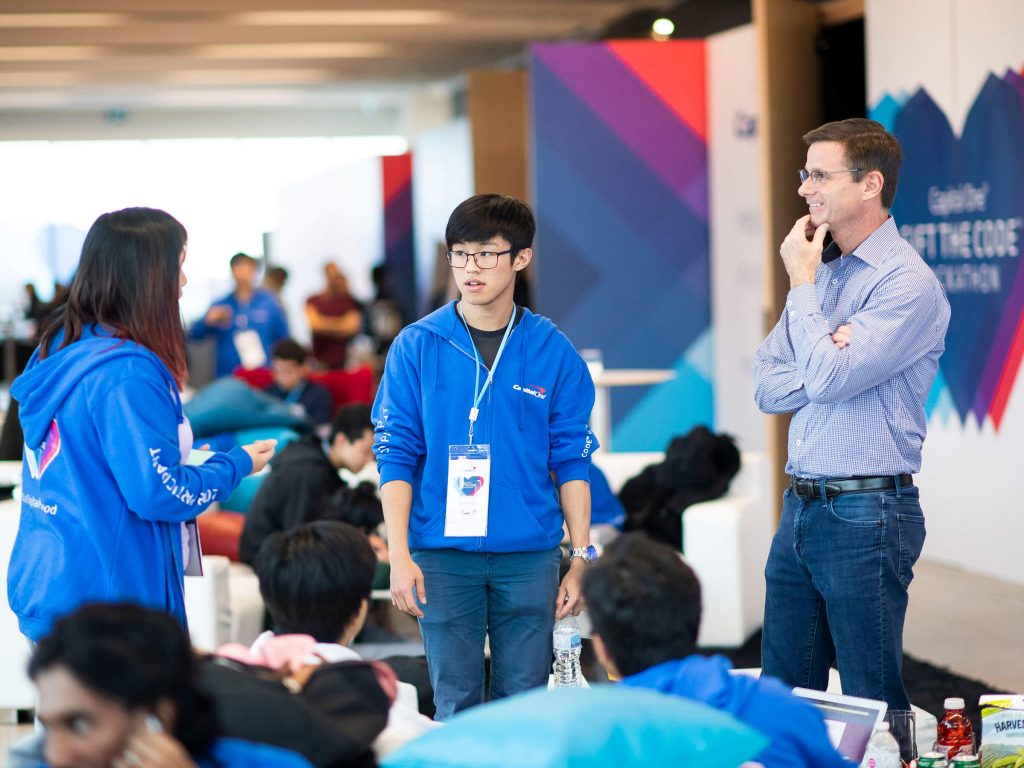There are tons of tech conferences across Canada. Each one has a similar premise, with talk about creating the future. They provide access to education, networks, and other resources to identify the needs of tomorrow, today.
However, not many tech events focus on building a better future. Enter Capital One’s Digital for Good Summit and Tech Jam. With 74 percent of Canadian charities feeling like the tech gap is harming their success, and 50 percent saying they are falling behind in learning about new tech advancements (according to a 2018 Capital One Canada survey), the technology that is heralded as the world’s problem-solving tools threatens to destroy the charities – and charitable causes – it aims to support.
“We believe that the business community has a responsibility to share its knowledge and access to top tech talent, to improve efficiencies, and further social impact,” said Kevin Chan, the head of digital strategy at Capital One Canada.
Now back for its second year, Capital One’s Digital for Good initiative wants to scale how it impacts charities across Canada. Speaking with BetaKit, Chan shared how Digital for Good changed its model from hackathon to charity technology partner.
Scaling social impact
The initial Digital for Good model, called Gift the Code, resembled a hackathon. Teams came together before the event, comprising different skill sets such as engineers, designers, product managers, and data scientists. At the event, teams were partnered with charities (typically 3-4 teams assigned to one charity). Teams would then build their solutions, hackathon-style, with Capital One and charity representatives acting as mentors and guides. At the end of the day, charity leaders would pick the winning solution to implement in their organizations.
“We believe that the business community has a responsibility to share its knowledge and further social impact.”
– Kevin Chan
After receiving feedback and looking at how it could scale impact, Capital One decided to make a change. Everyone liked the educational content throughout the day; charity leaders could learn while hackathon teams worked on their solutions. The charities also liked that the teams were multi-functional, however, the idea of “winners” and “losers” didn’t work well in the context of helping charities. Further, the model of multiple teams competing for one charity’s vote hindered the scalability of the program.
“What we wanted to do was actually increase the scale of what we’re producing through this event,” said Chan. “So instead of having it as a competition, where multiple teams will be working for one charity, we’ve switched up the format a little bit this year. We’re actually pairing up charities with teams ahead of time and making sure that the teams better understand the specific challenges that a charity faces. And then during the Tech Jam, work on creating the solutions to address those challenges.”
With this new Tech Jam model, the event could nearly triple in capacity – from six to 15 charities – and give every participant the chance to deeply understand their partner charity’s challenges. The hope is that this will lead to greater impact and more scale without discarding an otherwise great idea because it wasn’t the best overall. This was a trend at the previous year’s hackathon, where charities talked about taking elements from each team despite having to pick a “winner.”
“We won’t be leaving any of those great solutions on the table because there isn’t just one winner,” said Chan. “This way, we get to scale out a little bit of the charity that we’re giving here.”

A foundation for closing the tech gap
The hackathon format also exposed that not all charities would benefit from being handed a tech solution, as charities that were too early in their journey often weren’t able to fully implement the solutions. Capital One recognized Digital for Good needed to evolve the format of the program, since “implementation [of the technology] is the primary goal.”
“If we really wanted to move the needle on the issue, we quickly realized that education was also needed,” said Chan. “That’s why we launched the Digital for Good Summit – it allowed us to not only meet a large number of charities where they are at in their journey, but also inspire and educate charities on the possibilities of tech.”
The format of the Summit allows a broader group to get involved, get educated, and plot the next steps of their tech journey. Last year’s inaugural event hosted more than 130 charities and Capital One is aiming to increase attendance this year.
The secondary goal is using technology as a foundation for further investment as opposed to a one-time solution. Often, charities have trouble making the business case for investment in technology because of their knowledge and implementation gap. Chan hopes the new model of the Digital for Good program will help charities with a free foundation.
“Being able to donate, from our perspective, some solutions shows the value of those solutions,” said Chan. “And then that helps the charities build the business case on continuing to invest because they can demonstrate that there is value there.”
BetaKit is a Digital for Good media partner and this article is sponsored by Capital One.


